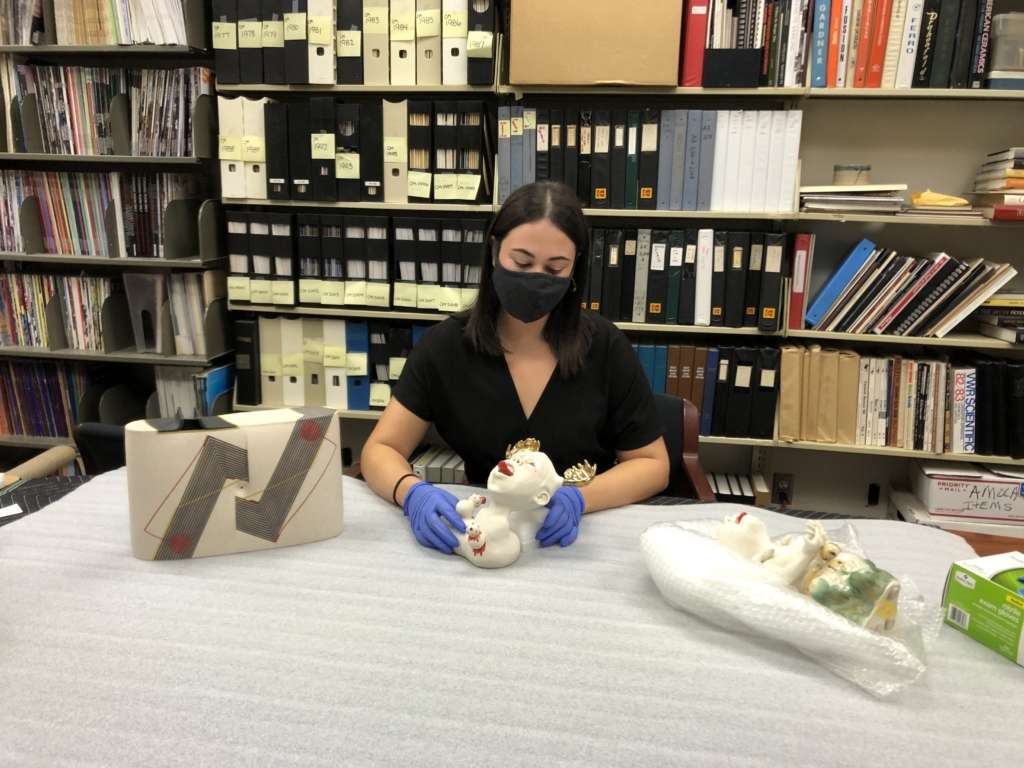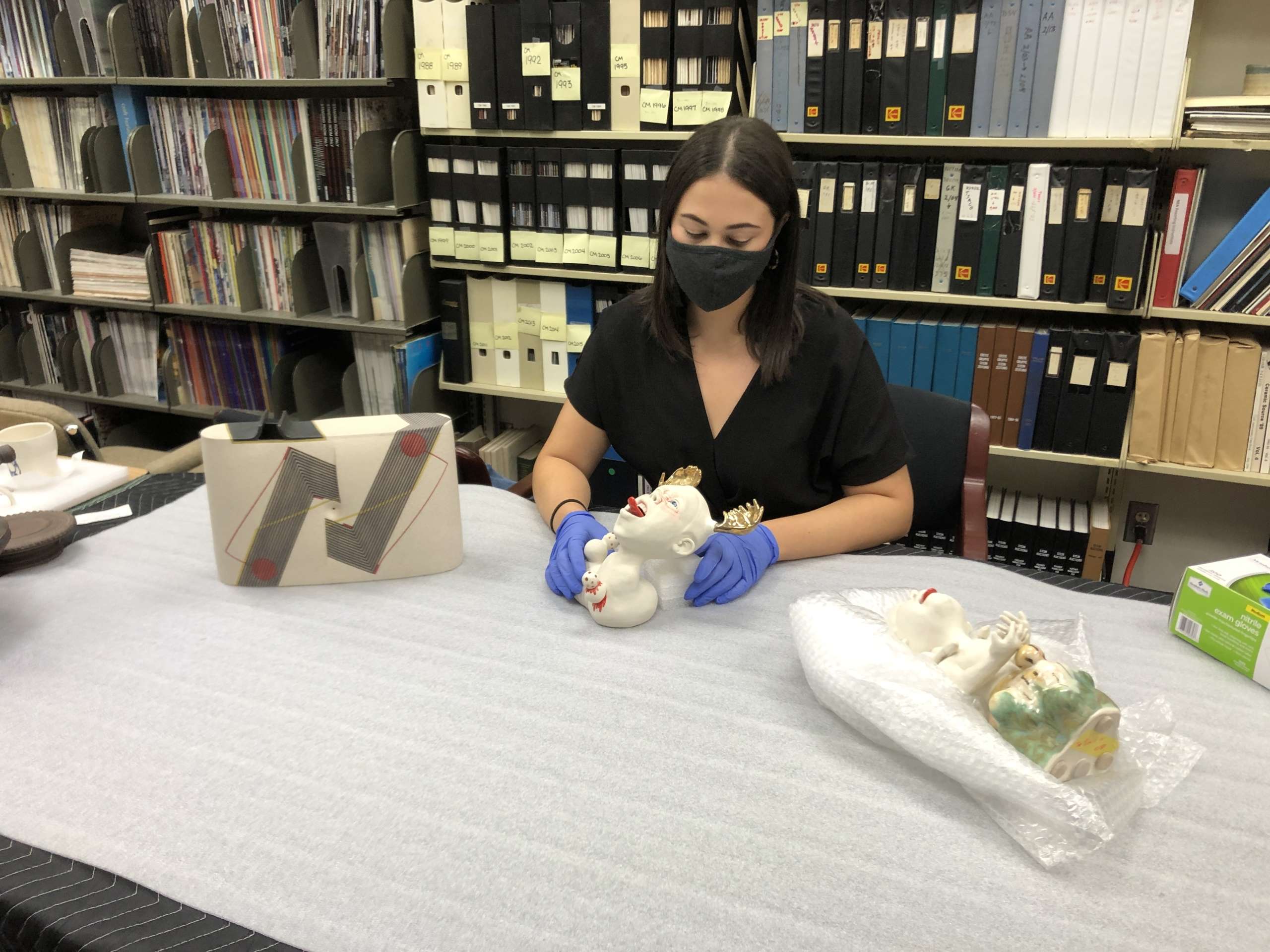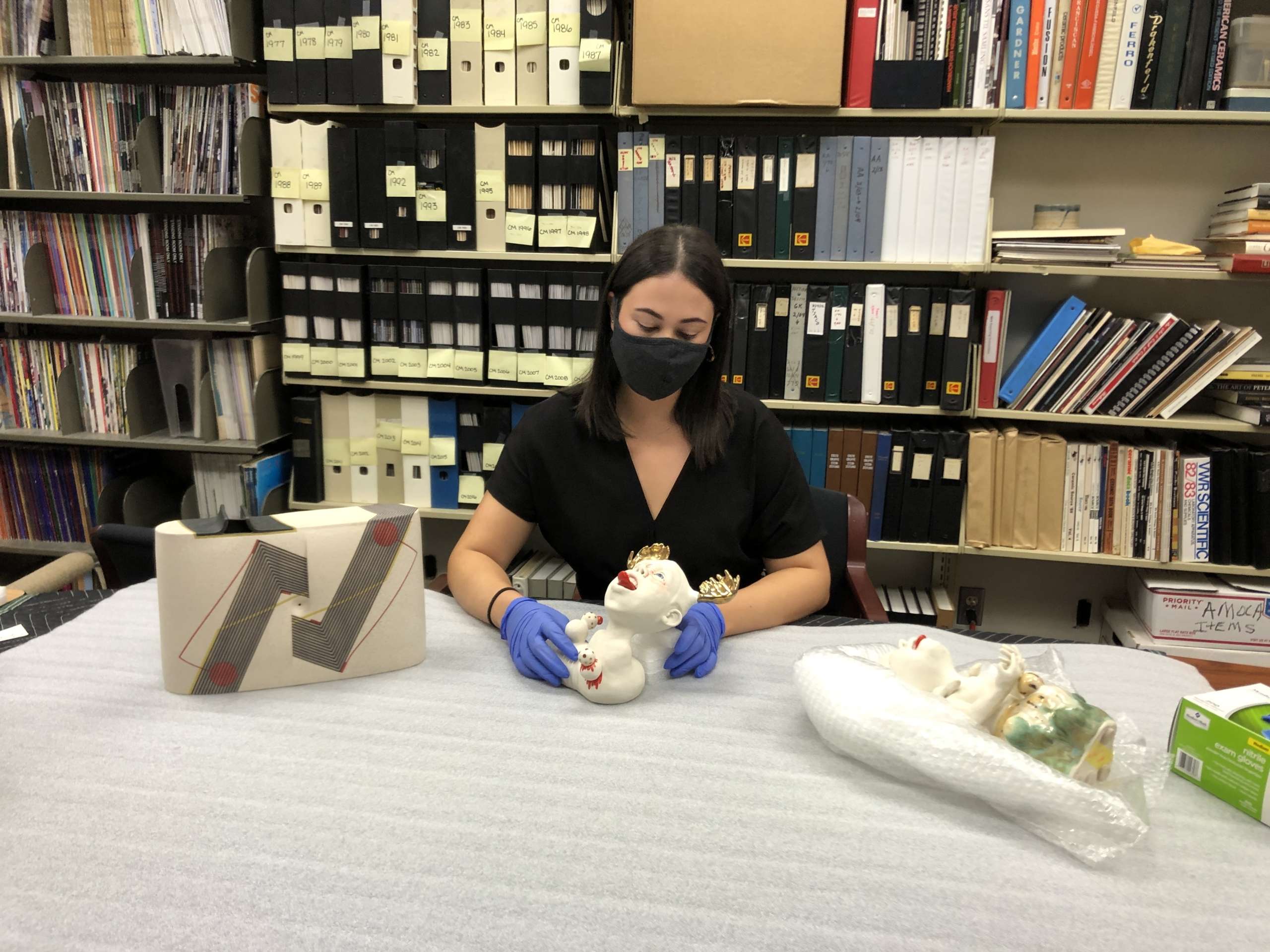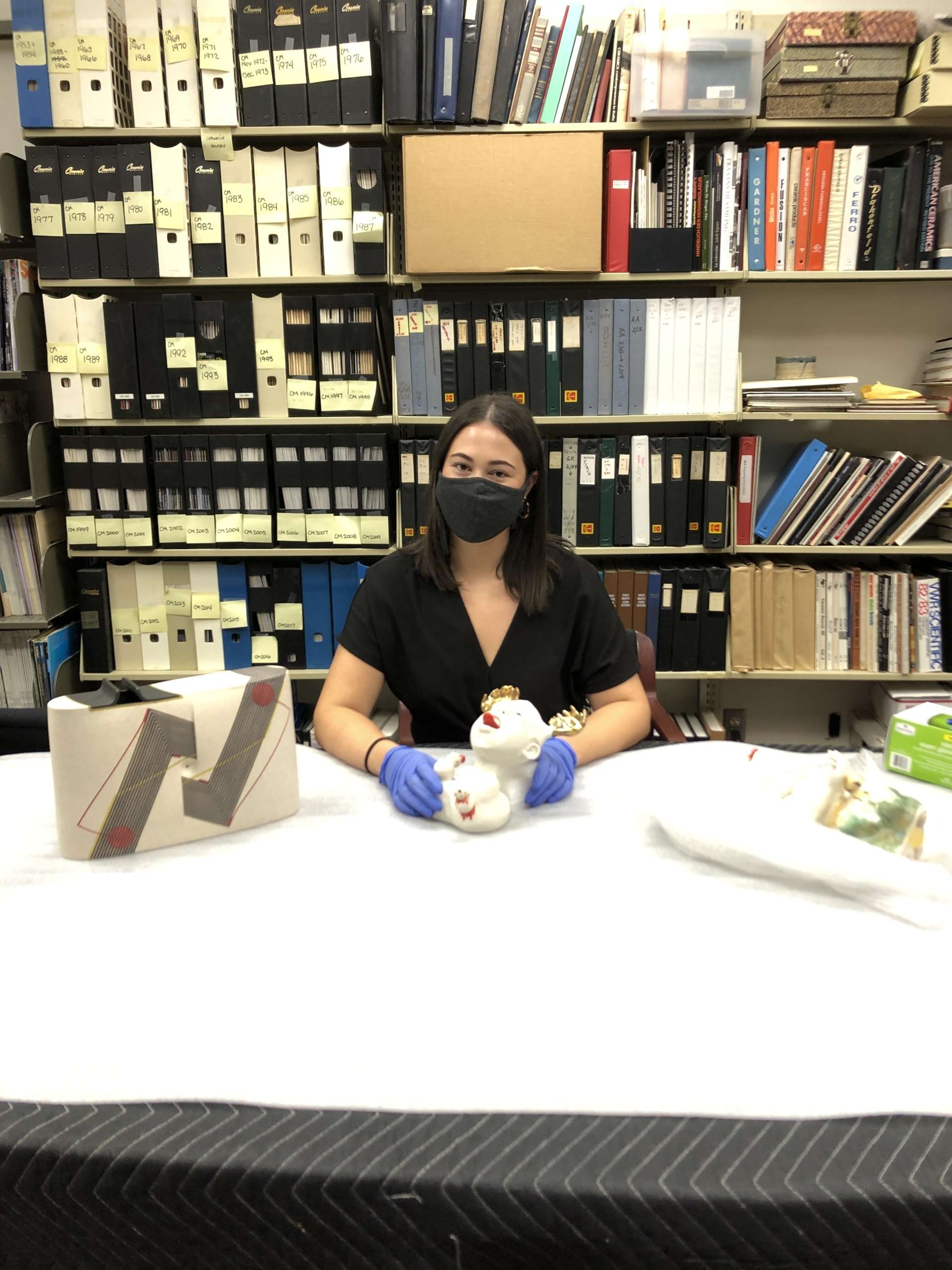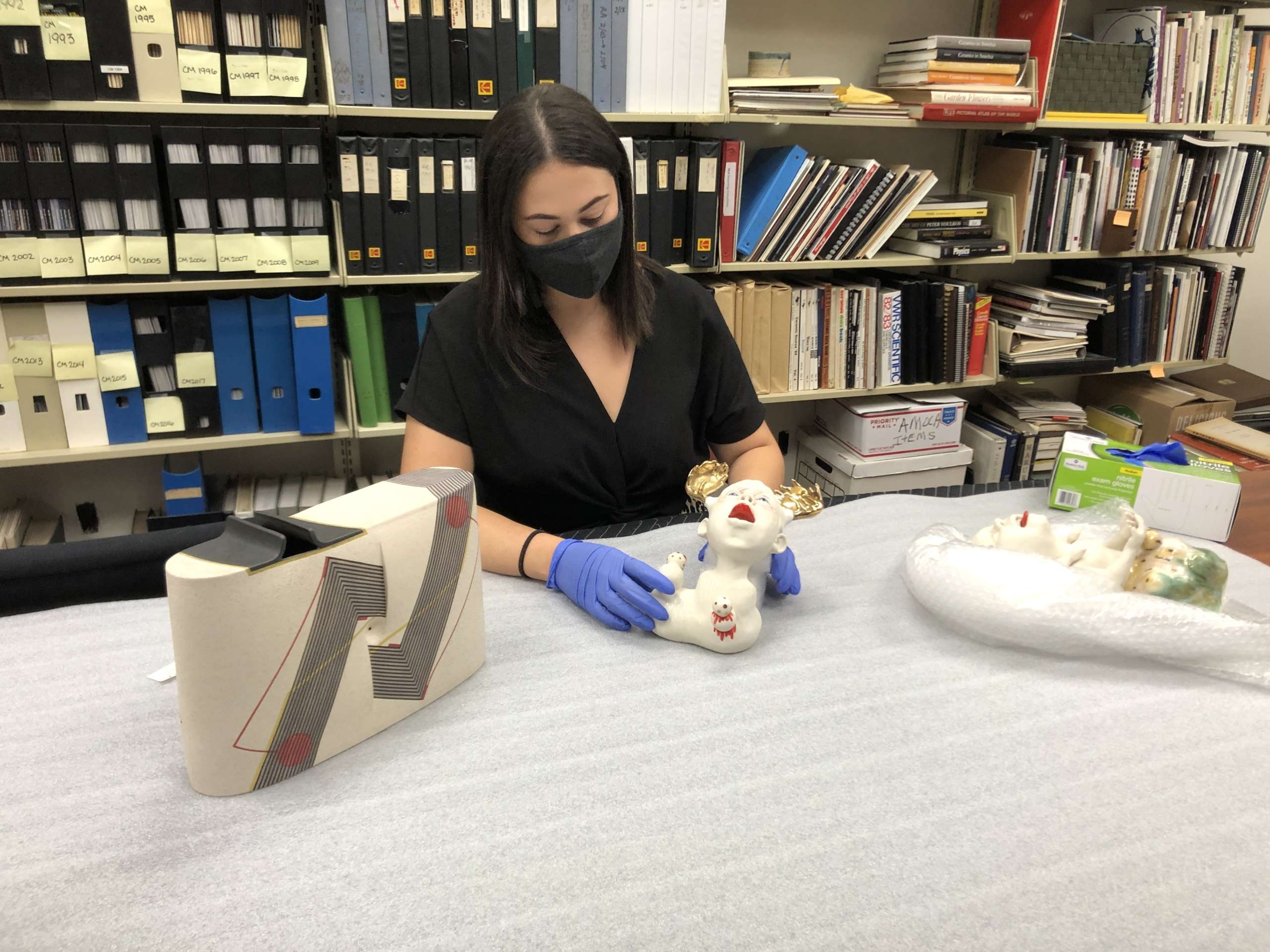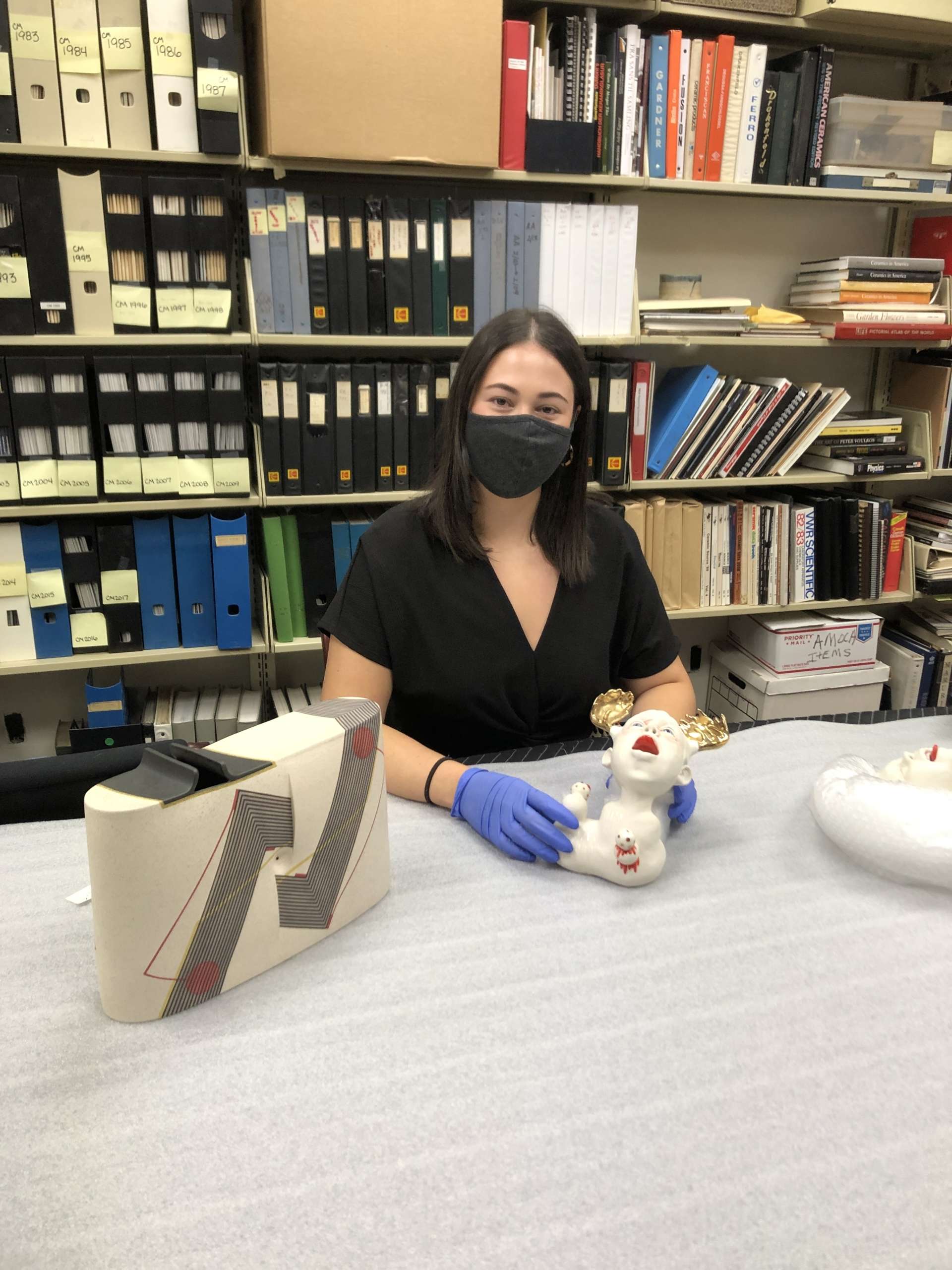Alyson Brandes with three new acquisitions being processed. Pictured left to right: José Sierra, untitled vessel, n.d. Gift of Dean Spong. Kyungmin Park, untitled sculpture, n.d. Gift of Dean Spong. Kyungmin Park, “Taste of Air,” 2017. Gift of Dean Spong.
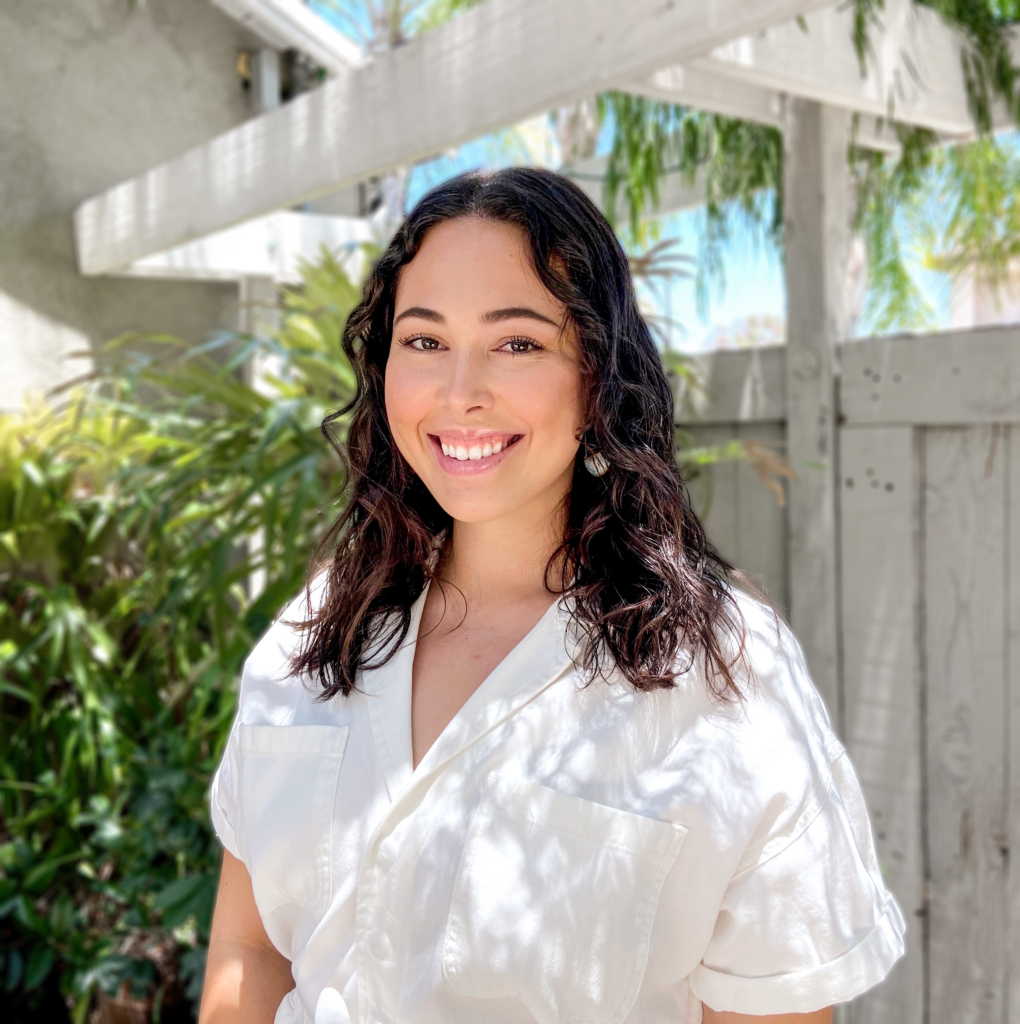
Hi! My name is Alyson, and I’m this year’s Getty Marrow Intern at AMOCA. I recently graduated from Chapman University with a BA in Art History and a minor in Anthropology.
It’s my 15th, and last blog post, so I wanted to reflect on my experience as an intern at AMOCA this summer. This year has truly been a rollercoaster for obvious reasons. It’s felt like everyone has struggled together to traverse a new way of going about daily life. Applying to the Getty Marrow Internship program, interviewing, and then receiving the Curatorial Internship position at AMOCA while finishing my senior year of college online, and in the middle of a lockdown didn’t feel real, but I’m glad that it happened.
My first staff meeting at AMOCA took place in the midst of Black Lives Matter protests going on across Los Angeles and the rest of the country, creating a need for important conversations and reflecting at most art institutions. While museum closures due to Covid-19 have been difficult for institutions, they have also been given the time and opportunity to think about, and make changes in, how they operate and create narratives through exhibitions and BIPOC involvement. New programs and fellowships aimed at creating diversity in the arts are in conversation or have been formed already.
As a Curatorial Intern, I was surprised at the amount of freedom I was given to take a general idea we had for a future exhibition, and then build on it. Good curating is a crucially important task for any museum, art or anthropological, because the narrative and physical layout for an exhibition cues visitors in to how they should feel about the works and the artists presented to them. I learned how important wording is in grant writing and wall text because of this. Researching artists to the point where I was memorizing their artist statements and how to spot their works from a lineup was like a trial by fire for expanding my knowledge of American ceramic artists.
One of the first steps in forming an interest in the arts is to have access to it through museums, galleries, and artist studios. With museums being closed to the public, virtual exhibitions, Zoom lectures, tours, and artist studio visits have become increasingly popular, and are easy to access, but only as long as a household has a computer and internet connection. One of my favorite essays in college was Carol Duncan’s “The Art Museum as Ritual,” (1995) which lays out the unspoken rules of entering art spaces: dressing a bit nicer, walking slowly, whispering (if talking at all) and pausing to reflect and think hard about works of art. These rituals, which were overdue for change, create spaces that are pretentious and intimidating, even I felt overly cautious at times when going to museums as an Art History student who was familiar with the artwork.
I was never able to see AMOCA full of visitors during my time spent there, but it was exciting to know that those curious to see art were still able to see some of the exhibitions in a virtual layout. Students from several different countries have even been able to use exhibition tour materials provided by the museum, allowing them to see and learn about artwork from oceans away.
I had an incredibly valuable experience this summer and learned so much more than I had expected, thanks to the welcoming support of the AMOCA family. So I want to say thank you to Beth Ann, AMOCA’s Executive Director, for walking me through the process of curation (and grant writing), and that I’ll miss sitting 6 feet away from you, brainstorming how to rephrase a sentence with an open thesaurus. Thank you to Paul for editing these blog posts, and to Nathan, Ashley and Kimberly for being the nicest coworkers. Also big thank you to Anna for letting me spend a month with her learning the basics of collection management and registration, it’s definitely a path I want to continue on in the future.
Alyson Brandes is a graduate of Chapman University and a 2020 Getty Marrow Undergraduate Intern at AMOCA. During her internship, Brandes writes periodically for AMOCA.org, and posts on Instagram and Facebook on Tuesdays. Read her blog posts:
- Asco and the Hierarchies of Art
- Feminizing Brutalism: Ruby Neri and Her Giant Vessels
- The Cinematic Roots of Clay
- The Colorful World of Miss Anna Valdez
- Split Vessels: Jenny Hata Blumenfield
- The Legend of Beatrice Wood
- Nicole Seisler: Rituals, Processes and Documentation
- Ashwini Bhat
- Nancy Selvin: The Abstraction of Art History
- New Acquisitions: Trompe l’Oeil
- Kim Tucker’s “Primal Beings, Ghosts, and Human Dummies”
- Blue Boys and Farmers: Howard Kottler’s Queer Plates
- At the Center of Nicki Green
- The Legacy of Sascha Brastoff
- End of Internship Reflection
